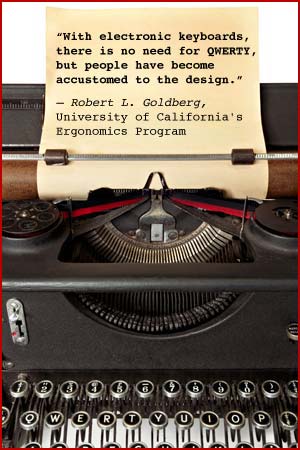
Why Are Keyboards QWERTY?
The arrangement of the first six letters in the top alphabet row of a standard keyboard QWERTY goes way back. The layout was created in 1873 when Christopher Latham Sholes made improvements to his earlier typewriter models in order to design a quicker and more efficient typewriter for E. Remington and Sons.

Since then, many alternatives to QWERTY have been created, such as the Dvorak Simplified Keyboard (named after professor and co-creator August Dvorak) and the Colemak keyboard layout. Even though these new keyboards are designed to increase typing speed while maintaining ergonomic considerations, QWERTY remains the standard.
"The QWERTY keyboard layout was developed to reduce keys jamming on mechanical typewriters to improve typist productivity," Alan Hedge, a professor in the Department of Design and Environmental Analysis at Cornell University, where he directs the Human Factors and Ergonomics research programs.
"These days computers don't have keys that jam, but even though QWERTY isn't the optimal keyboard layout, it's not the worst and it seems that we're stuck with it," Hedge told Life's Little Mysteries.
As in other behaviors, it seems, humans are creatures of habit:
"With electronic keyboards, there is no need for QWERTY, but people have become accustomed to the design and that is why it continues to be used," explained Robert L. Goldberg, a professor at the University of California's Ergonomics Program.
- 7 Gadgets That Changed the World
- How Did Sliced Bread Become the Greatest Thing?
- How Do Post Office Machines Read Addresses?
Sign up for the Live Science daily newsletter now
Get the world’s most fascinating discoveries delivered straight to your inbox.









